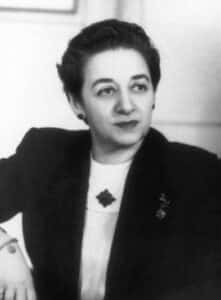A brief female medical history
Why is a female’s surgical history so important to bring up? For centuries, women were denied medical knowledge and technological progress since it was considered a male-dominated field of study.
When plastic surgery took its first steps towards reconstruction practices in the Middle Ages, women were banned from participating in such trials. In 1540, the statute for the “Compagnia dei Barbieri Chirurghi”, the first surgeons’ association, excluded women from any type of practice. In the 14th century, King Henry VIII said, “No carpenter, blacksmith, weaver or women, they will practice surgery.”
However, history has not always been so harsh; the ancient world had welcomed women to participate in scientific knowledge. According to discoveries, female medical students were present in Heliopolis, Egypt, 1500 BC. Aesculapius, son of Apollo, had four daughters who were physicians in Ancient Greece. The Tetrabiblion, written by Atius (150 CE), details the surgical procedures of Aspasia, a Greco-Roman female surgeon. Until the 11th century, this was considered the main surgical text.
And what about the 19th century? Women never made up more than 6% of any medical school class in the United States or Canada before 1970. In those years, the feminist movement, an increase in the number of women graduating from college, and numerous vacancies encouraged women to apply to medical school.
In 1970, women made up around 5% of all physicians in the United States; by 2001, that percentage had risen to 24%. The American Association of Medical Colleges (AAMC) estimated that medical school enrollment is about equal between men and women.
Dr J.M. Barry, the “beardless lad”

Dr J.M. Barry
The history of the female surgeons opens with the fascinating story of Dr James Berry (1795–1865), also known by the name of “beardless lad”.
Dr Barry attended the esteemed Edinburgh Medical School and graduated at the age of 17 in 1812. During the Napoleonic wars, he served in the army as a physician, and in 1820, at the request of a wealthy client whose wife appeared to be in labour, he conducted one of the first successful Caesarean sections.
Although Dr Barry lived his entire adult private and professional life as a man, he was born Margaret Ann and was known as a female throughout his infancy. The choice to change his gender would partly be to gain acceptance as a university student and pursue a career as a surgeon; only after a post-mortem examination was Barry’s biological sex revealed to the public and military colleagues.
A friend commented that “She chose to be a military doctor upon her death. Not to fight for the right of a woman to become one, but simply to be one”.
Alma Dea Morani – From sculpture to the plastic surgery

Dr Alma Dea Morani
Her father wanted her to be a successful sculptor, but she chose to dedicate her life to medicine and become the world’s first female plastic surgeon.
Alma Dea Morani was born in New York City in 1907 to Amalia Gracci Morani and artist Salvatore Natali Morani, from whom she inherited a strong aesthetic sense.
Morani earned her M.D. from the Woman’s Medical College of Pennsylvania in 1931. In 1946, she started her training in St. Louis under renowned plastic surgeon “Colonel” J. Barrett Brown, M.D. It took her six years to find a course that would accept women, but her fellowship only permitted her to observe, not operate.
She made the best of these restrictions and used her skills as an artist to observe and make sketches and pictures before and after surgical procedures. Colonel Brown eventually noticed her intense work, and he finally allowed her to assist him in surgery “on Saturdays when everybody else went to play golf,” letting her complete a true clinical fellowship.
Dr Morani returned to Woman’s Medical College of Pennsylvania, where she was appointed clinical professor of general surgery and plastic surgery until 1975.
Helen Octavia Dickens – the first black woman admitted to the American College of Surgeons

Dr Helen Octavia Dickens
In 1950, Dr Helen Dickens was the first African American woman admitted to the American College of Surgeons. She often recalled her medical school class, when she opted to sit in the front row to avoid being bothered by her classmates’ racist comments and gestures because she was the daughter of a slave.
Dr Dickens was always motivated and inspired by the achievements of other African American women who had gone before her. Helen Dickens, the only African-American woman in her class, received her M.D. from the same college in 1934 and became associate dean of the University of Pennsylvania’s Office for Minority Affairs in 1969. Within five years, she had boosted minority enrollment from 3 to 64 students.
Dr Dickens educated young women to empower themselves. She used her research to advise schools, parents, and health professionals on intervention strategies to lower the incidence of teen pregnancy and sexually transmitted diseases. She received numerous honours for her work on sexual health for young and adult women.
Dora Richter – The first Trans Woman to undergo gender confirmation surgery

Dora Richter
The history of medicine is traced not only by doctors and surgeons, but also by brave patients who opt to be among the first to undergo a procedure. Today, we’ve decided to tell you about Dora Richter, the world’s first transgender lady to undergo gender confirmation surgery. Dora was born in 1891 in Germany to a poor farming family. Despite his birth name being Rudolph, her parents allowed her to live free of her gender identification for all her childhood.
She lived her adult life in Berlin, where she was occasionally arrested for the ‘crime’ of cross-dressing and sentenced to a men’s prison. Finally, Dora was entrusted to the care of Magnus Hirschfeld, a German physician and early sexual rights activist. He ran the Institute of Sexual Research, where Dora worked as a housekeeper for more than ten years.
In 1922, she had an orchiectomy and vaginoplasty. As far as we know, that made her the first person to undergo gender confirmation surgery. Her death is likely due to a Nazi attack in the institute in 1933.
Ada Lovelace – The mother of modern computing science

Ada Lovelace
As a DeepTech company, we can’t forget Ada Lovelace, the woman who contributed to the development of modern computer science. Today, she is officially recognised as the first computer programmer in history. Ada Lovelace was the only daughter of the poet Lord Byron and Anne Isabella Milbanke, a mathematician.
Her mathematical abilities led to a long working connection and friendship with Charles Babbage, considered “the father of computers“. Babbage’s work on the Analytical Engine piqued her curiosity in particular. Lovelace’s notes are significant in the early history of computers because they contain what is widely regarded as the first computer program—that is, an algorithm designed to be executed by a machine. Ada described her approach as “poetical science” and herself as an “Analyst (& Metaphysician)”, this mindset led her to inquire about the Analytical Engine and how individuals and society interact with technology as a collaborative tool.
Bibliography
Wirtzfeld, Debrah A. “The History of Women in Surgery.” Canadian Journal of Surgery. Journal Canadien De Chirurgie, Canadian Medical Association, Aug. 2009.
“Dr James Barry: A Woman Ahead of Her Time Review – an Exquisite Story of Scandalous Subterfuge.” The Guardian, Guardian News and Media, 10 Nov. 2016
“Changing the Face of Medicine | Alma Dea Morani.” U.S. National Library of Medicine, National Institutes of Health, 3 June 2015.







